Rigid vs. Flexible Solar Panels: The Pros & Cons of Different Styles
With solar panel technology becoming more and more efficient, opportunities to break away from the traditional, rectangular glass panels grow each year. These creative applications inspire new ideas about where we can install solar panels and what we can power with them. If you are the type that gets easily overwhelmed by choices, this blog may help you choose the right panels for your lifestyle!
Rigid solar panels are the industry standard, have been around for decades, can stand up to all kinds of weather and can be installed to optimize solar angle throughout the year. They are tried and true and no one will look at you sideways if you choose to go this route.
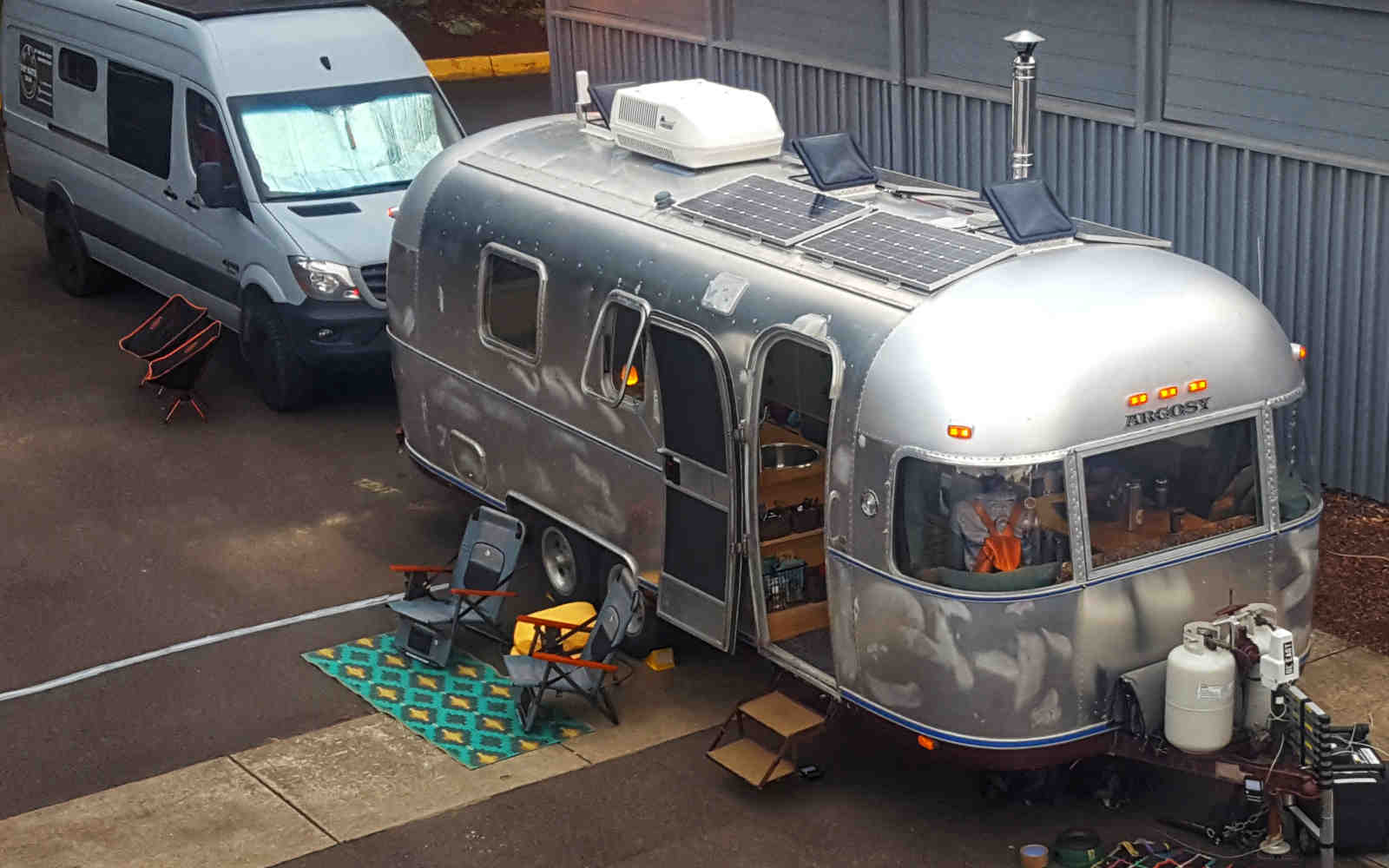
Flexible solar panels can conform to a wide variety of surface shapes, provide the same power output, and weigh a fraction of their rigid panel cousins. They are slick and sleek and cost nearly twice the price. Given that they are twice the price, why would you want to use these panels?
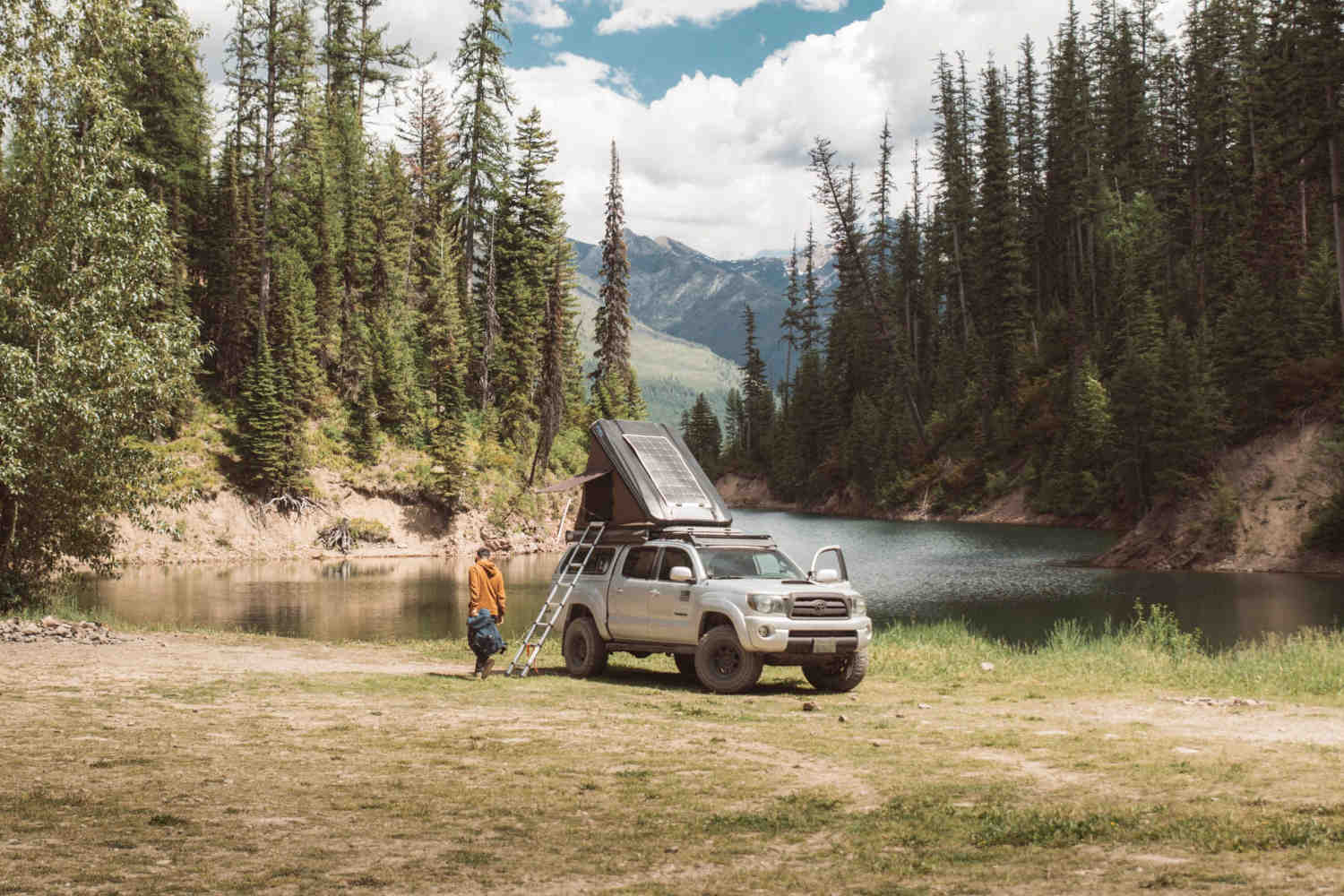
We take a closer look at the pros and cons of these two types of solar panels so that you can determine which best meet your needs and lifestyle.
Rigid Panels
The Good...
“These panels just won’t friggin’ break!”
- Satisfied Renogy customer at the 2019 Quartzsite, AZ “Big Tent RV Show”
When people think about solar panels, it is likely the rigid panel design that comes to mind.We see these on the southern exposure of rooftops or on massive solar farm installations. They are the very definition of durability and are typically installed in super sturdy brackets which can be angled to maximize solar gain throughout the year. This can be important during the winter months when the angle of the northern hemisphere tilts away from the sun.
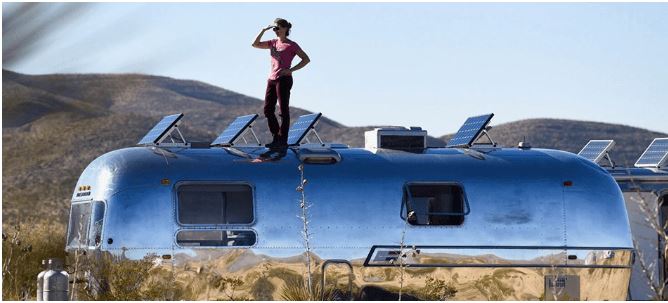
Solid brackets bolted down to roof struts mean that these all weather panels can take a beating, not to mention highway speed wind resistance. The rugged and corrosion resistant aluminum framing protects the low-reflectivity tempered glass, improves cell performance, and is simple to maintain -- providing decades of quality service.
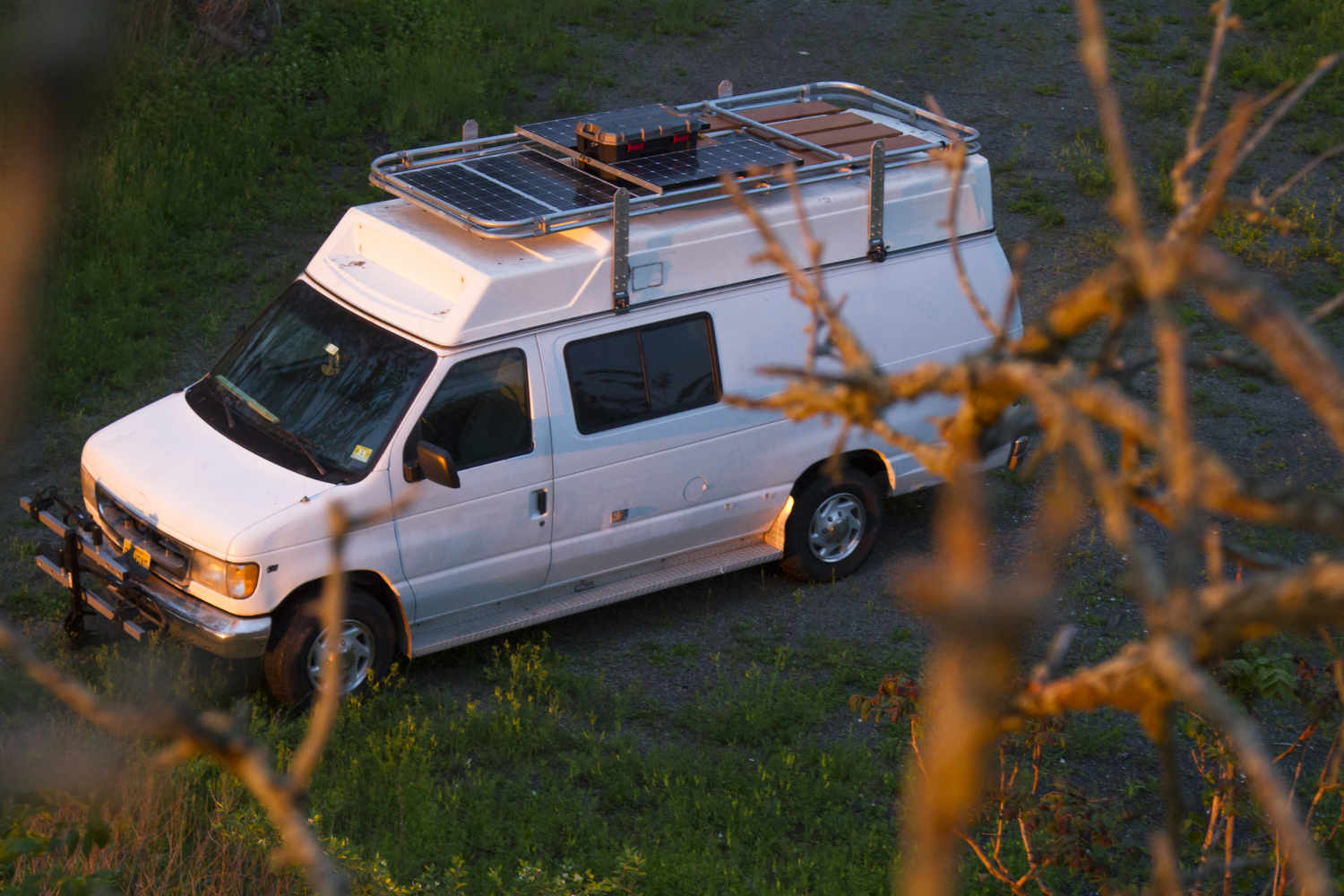
The Bad…
“I am just a little worried about putting holes in my roof.”
- Solar curious customer at 2019 Seattle RV Show
No one likes the idea of putting holes into the roof of any RV. But with careful installation and sealing materials, these concerns can be minimized.Afterall, most RV’s have numerous vents, skylights, and fans piercing through the roofing material. Portable Solar Suitcases might provide a happy medium, providing the durability of a rigid panel without the headache of a permanent install. See our video on adapting a “solar ready” camper to work with a Renogy Solar Suitcase.
Even with a solid, water tight installation, you can’t get away from the fact that rigid panels are relatively heavy (a 100W Renogy panel weighs 16.5 lbs). Adding a few of these to your roof is no big deal, but if you’re looking at a complete roof of solar panels, the weight will add up. All that weight will create wind drag and will decrease your fuel efficiency.In the long run, these panels could be more expensive.
DIY Ease of Installation (Rigid)
Depending on your skill set, installing rigid panels can either be overwhelming or relatively straight forward. Check out this very informative video of a professional installation.
There are others who have installed rigid panels using creative “z” brackets and industrial “super sticky” roofing tape.Installers claim to have driven thousands of miles without any problems. Here’s a great video describing this process.
Flexible Panels
The Good...
“I could just stick these down on the top of my teardrop!”
- Another solar curious trailer owner at the 2019 Quartzsite, AZ “Big Tent RV Show”
These adaptable and lightweight options provide the same power as their more traditional cousins, and weigh less than a quarter (a 100W Renogy flexible panel weighs 4lbs).
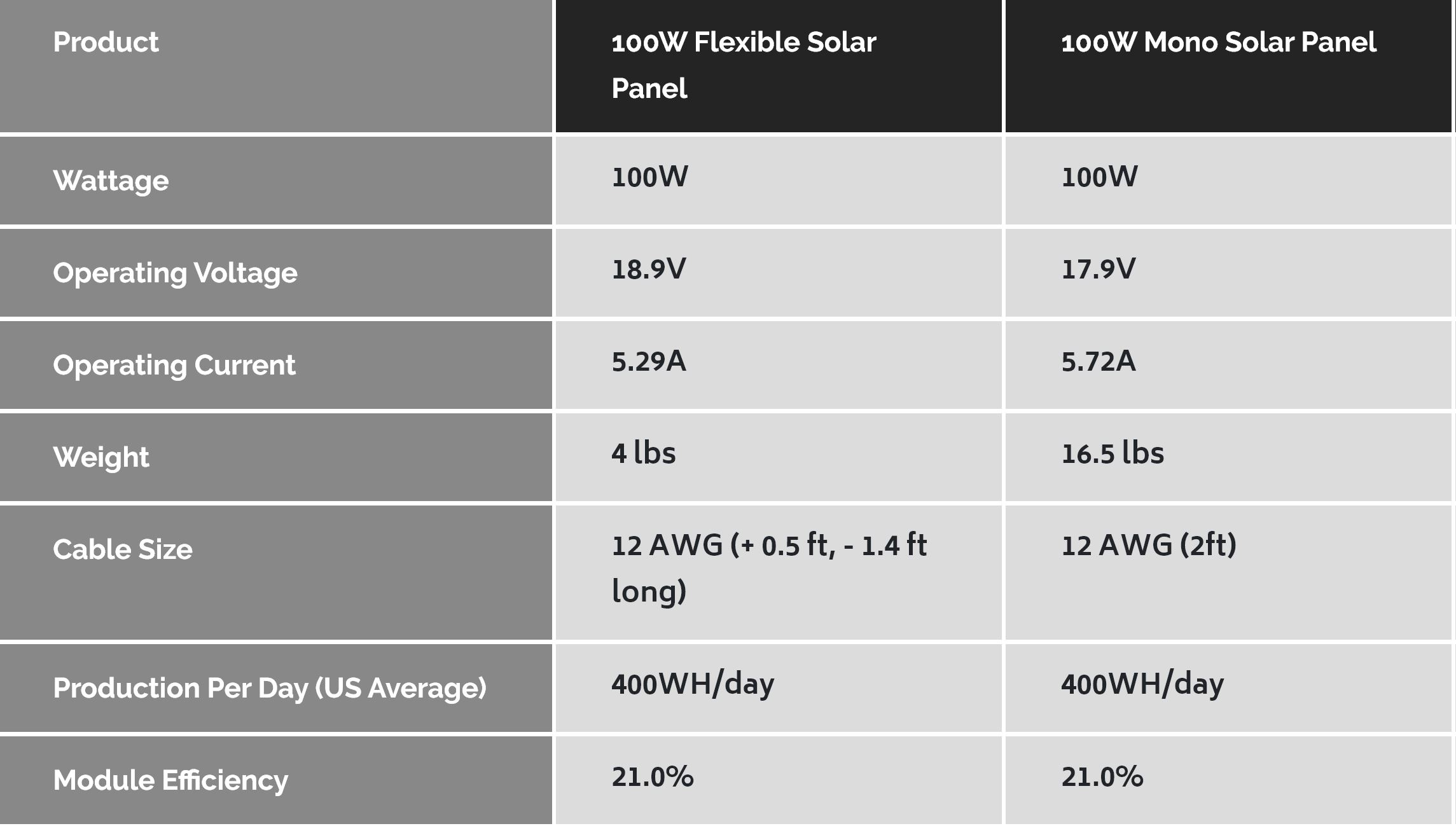
With the ability to flex up to 248 degrees, they can adapt to almost any curved surface, making them ideal for non-traditional RV shapes or ultra-light vehicles.
Their profile is extraordinarily low, only 0.08 inches thick, making these panels easier to tuck away out of site on your roof. Similar weather and waterproofness make them an ideal addition to almost any RV installation.
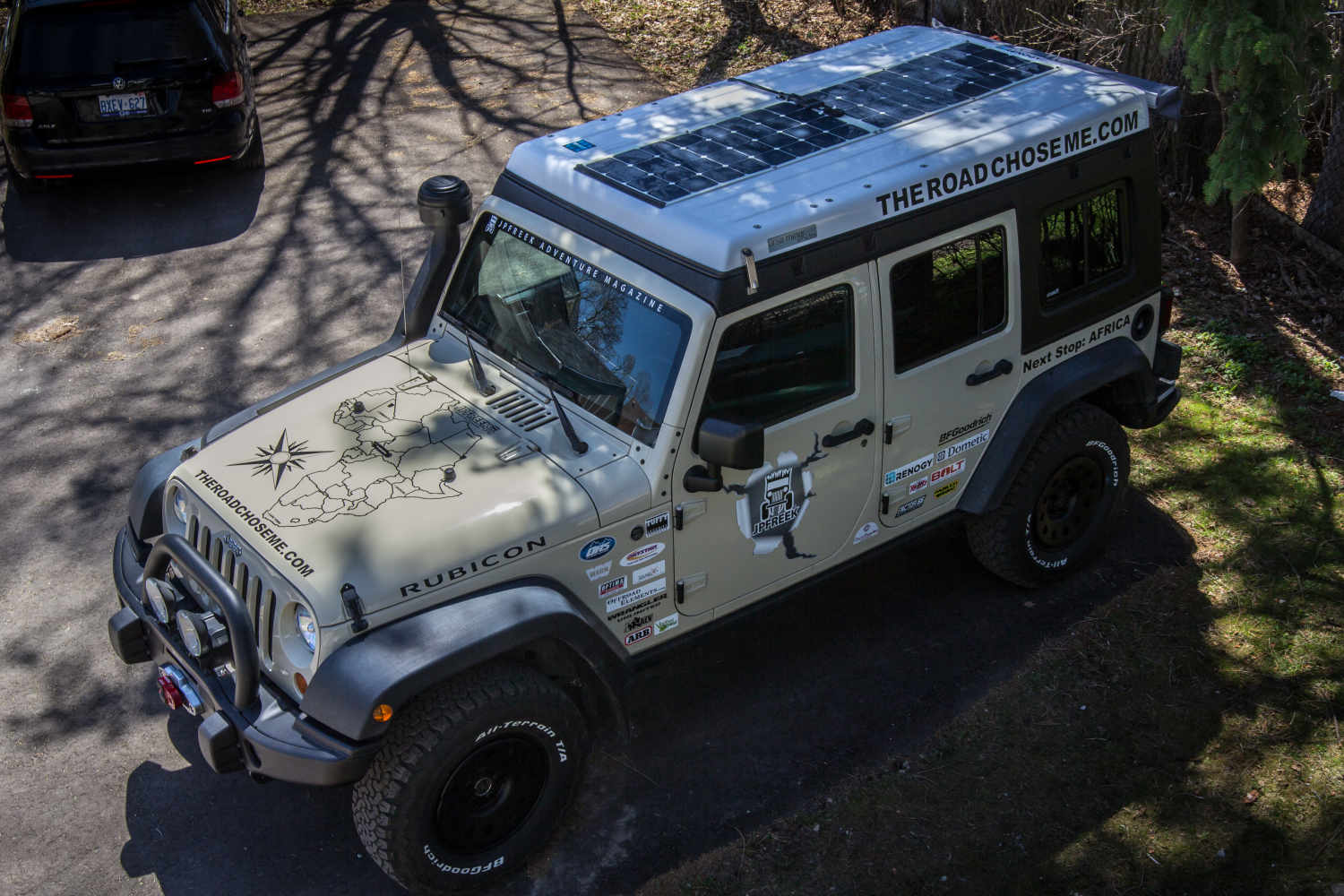
The Bad...
“What if they just blow away?”
- Customer at 2019 Chicago RV & Boat Show
The lightweight advantage can become a handicap in high winds. Without a secure installation, these flexible panels will take off like kites. Highway speeds can also exacerbate this situation, so make sure you’ve selected a quality install option.
Most installations of flexible panels involves some sort of industrial adhesive on a smooth surface, making them difficult to alter the angle of the panel to optimize solar gain throughout the year. However, the polymer surface of the panel has raised dots which help gather sunlight despite the angle of the panel, which is a pretty cool engineering trick.
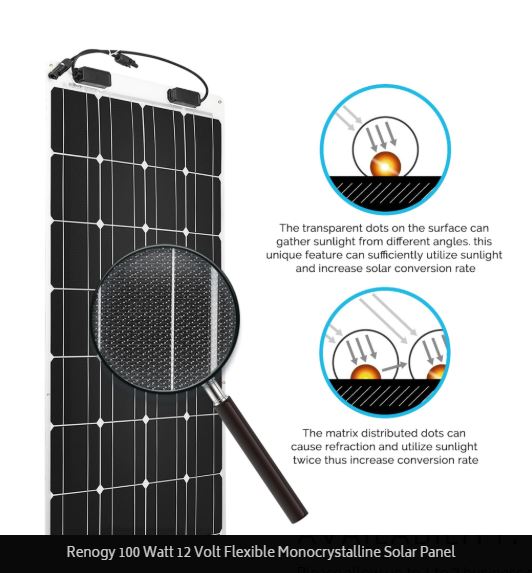
This flexible surface is more prone to scratching or gouging from overhanging branches when driving into heavily wooded areas. In general, the flexible panels are less durable, but Renogy offers the same 5-year warranty on workmanship & 25 years on power output as their rigid panels.
DIY Ease of Installation (Flexible)
In general, the installation of flexible panels is going to be simpler than rigid, and put fewer holes in your roof. Renogy recommends using any “industrial adhesive such as Sika-Flex 252, or a comparable adhesive,” as well as contacting the company to make sure their adhesive is the ultimate bonding solution between the two surface materials you are trying to combine since applications can become oddly specific. In addition, we’ve also sussed out a few more tips and tricks from YouTube below.
Heat has been an issue in the past with simply glueing down panels to the roof, because the panels need a small air gap to dissipate any heat passively absorbed by the sun.Most installers recommend putting a spacer behind the panel. This could be a double sided tape, or velcro tape, or plastic cardboard (aka Coroplast), just enough to give the panel some air between itself and the roof. One of the more creative installation ideas we’ve seen involves no holes in the roof and keeps the leading edge stuck down so that the panel doesn’t become a sail.
The current generation of Renogy flexible panels have a re-engineered surface with a much higher heat tolerance, which allows for either direct glue down or installing with a spacer. While there is no risk of damage, you may increase some panel efficiency if you allow for some space underneath the panel.
It’s also important that you install them somewhere on your roof where you won’t have to walk on the panels. Putting repeated weight on them could damage the internal solar cell or soldering, thus voiding your warranty!
What is the Best Application for Your Needs?
The shape, size, weight, and where you intend to use the panels might impact your decision to go with one style over the other. If you have an ultra-light trailer, are concerned about adding extra weight, or if you have a pop-up roof on your van or truck camper, flexible panels should be your go-to choice. Flexible panels may also be the ideal installation for sailboats. Incorporating them into the bimini over the cockpit adds a negligible amount of weight and can allow you the freedom to anchor for weeks at a time without hooking up to shore power.
If you plan on taking your big rig down to Arizona or Florida for the winter, and an extra 100 lbs isn’t much of a concern for your larger RV, then stick with the tried and true rigid panels. Folks who do set up for a season or boondock for weeks at a time might consider investing in angle brackets to take advantage of the extra efficiency they provide.
Whether rigid, portable suitcase, or flexible, we’re certain that your investment in solar panels will pay dividends in the freedom you will gain to live off the grid, and without noisy gas generators.
As Renogy Ambassadors and Affiliates, we’ll help you think through what you need and get you 10% off Renogy products by using our affiliate link and discount code (canlife). For about $900, you can set up a small camper or van with solar power! And, solar will save you money in the long run because you will not need full hook-up sites at campgrounds and you can boondock on free public land all over the country. Contact us, we love to hear from our readers and love to help!
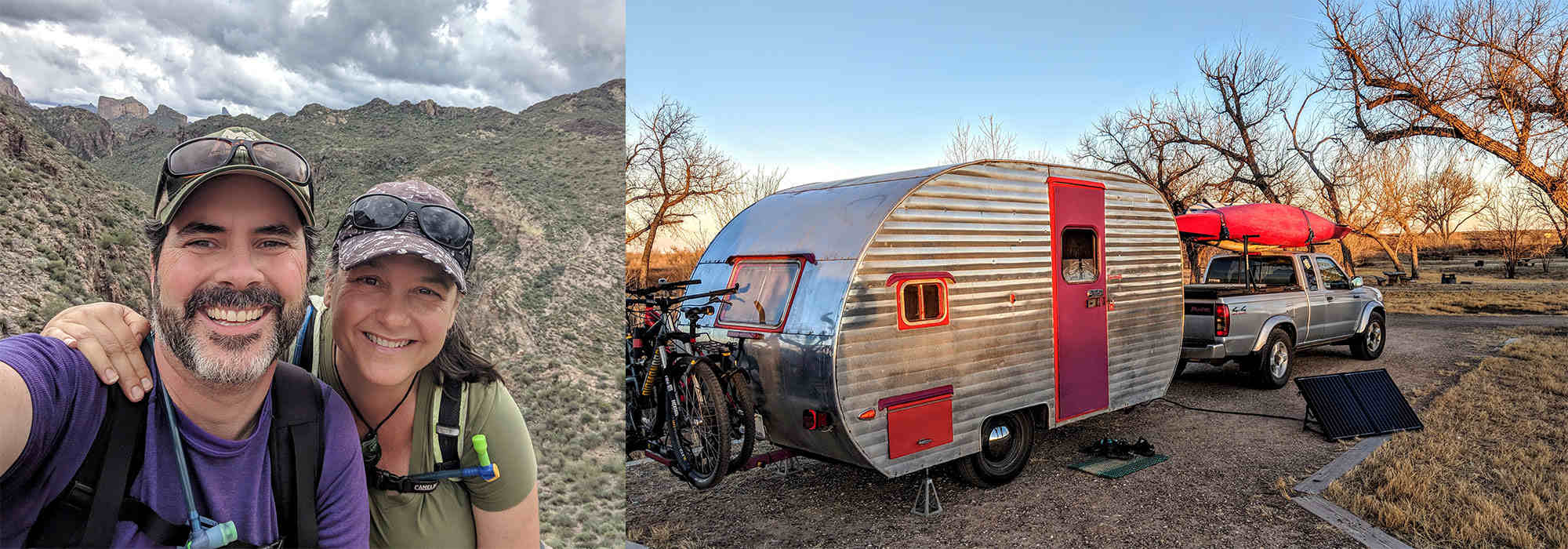
Shari Galiardi & David Hutchison have turned their higher education backgrounds, desire for life-long learning, and thirst for adventure travel into writing, photography, video production, and public speaking tours from coast to coast. Known to their friends as simply Shari & Hutch, you can learn more about their full-time, solar powered adventures on their website at freedominacan.com. Or, follow them on Facebook, Instagram, and YouTube as “Freedom in a Can.”










